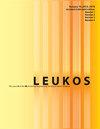利用远红光LED,以减少动态半导体照明的蓝光危害
IF 2.6
2区 工程技术
Q2 CONSTRUCTION & BUILDING TECHNOLOGY
引用次数: 4
摘要
光源的蓝光危害(BLH)和发光效率()分别与发光二极管(led)的光生物安全性和节能性有关。在本研究中,我们使用遗传算法(GA)来优化五芯片混合白光led的BLH、、和显色参数。基于优化结果,我们采用五芯片led获得混合白光。它们的峰值波长分别为461.5 nm(蓝色)、523.9 nm(绿色)、588.2 nm(橙色)、643.3 nm(红色)和694.2 nm(远红)。在实际应用中,混合白光的蓝光辐射危害效率(BLHER)小于0.10,低于大多数常见光源的一半。相关色温(CCT)在2700 ~ 6500 K范围内为51.6 ~ 115.6 lm/W。混合白光的CIE一般显色指数(Ra)、CIE第九深红色测试样品的特殊显色指数(R9)、ANSI/IES TM-30颜色保真度指数(Rf)和色域指数(Rg)的平均值分别为91.3、87.8、83.3和96.7。光辐射()在0.60 ~ 1.35 mW/lm范围内可调。这些结果表明,我们使用远红色led制造白光,具有低BLH和相对较高的效率。本文章由计算机程序翻译,如有差异,请以英文原文为准。
Utilization of far-red LED to minimize blue light hazard for dynamic semiconductor lighting
ABSTRACT The blue light hazard (BLH) and luminous efficacy of a source ( ) are associated with the photobiological safety and energy saving of light-emitting diodes (LEDs), respectively. In this study, we used genetic algorithm (GA) to optimize the BLH, , and color rendering parameters of five-chip hybrid white LEDs. Based on the optimal results, we used five-chip LEDs to obtain the hybrid white light. Their peak wavelengths were 461.5 (blue), 523.9 (green), 588.2 (orange), 643.3 (red), and 694.2 nm (far-red), respectively. In practice, the blue light hazard efficiency of radiation (BLHER) of the hybrid white light was less than 0.10, which was lower than half of the most common light sources. The ranged from 51.6 to 115.6 lm/W at correlated color temperature (CCT) from 2700 to 6500 K. On average, the CIE general color rendering index (Ra), CIE special color rendering index for the ninth deep red test sample (R9), ANSI/IES TM-30 color fidelity index (Rf), and color gamut index (Rg) of hybrid white light were 91.3, 87.8, 83.3, and 96.7, respectively. The melanopic efficacy of luminous radiation ( ) was tunable in the range of 0.60 to 1.35 mW/lm. These results demonstrated that we used far-red LEDs to fabricate white light with low BLH and relatively high efficiency.
求助全文
通过发布文献求助,成功后即可免费获取论文全文。
去求助
来源期刊

Leukos
工程技术-光学
CiteScore
7.60
自引率
5.60%
发文量
19
审稿时长
>12 weeks
期刊介绍:
The Illuminating Engineering Society of North America and our publisher Taylor & Francis make every effort to ensure the accuracy of all the information (the "Content") contained in our publications. However, The Illuminating Engineering Society of North America and our publisher Taylor & Francis, our agents, and our licensors make no representations or warranties whatsoever as to the accuracy, completeness, or suitability for any purpose of the Content. Any opinions and views expressed in this publication are the opinions and views of the authors, and are not the views of or endorsed by The Illuminating Engineering Society of North America and our publisher Taylor & Francis. The accuracy of the Content should not be relied upon and should be independently verified with primary sources of information. The Illuminating Engineering Society of North America and our publisher Taylor & Francis shall not be liable for any losses, actions, claims, proceedings, demands, costs, expenses, damages, and other liabilities whatsoever or howsoever caused arising directly or indirectly in connection with, in relation to, or arising out of the use of the Content. Terms & Conditions of access and use can be found at http://www.tandfonline.com/page/terms-and-conditions .
 求助内容:
求助内容: 应助结果提醒方式:
应助结果提醒方式:


